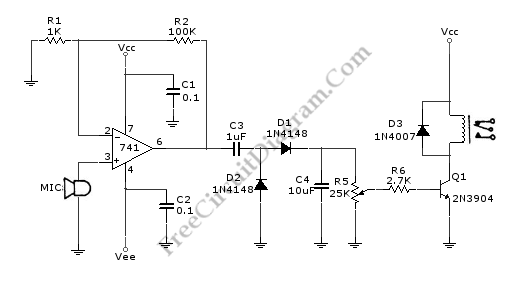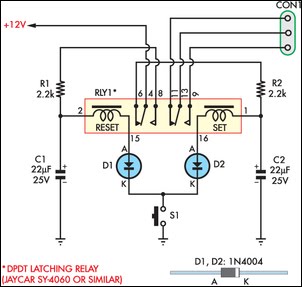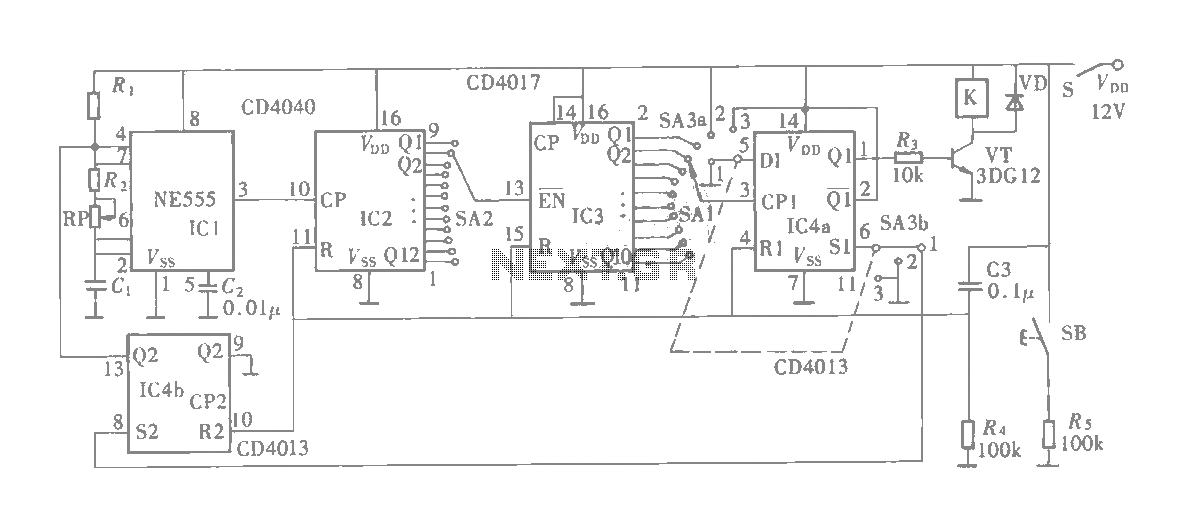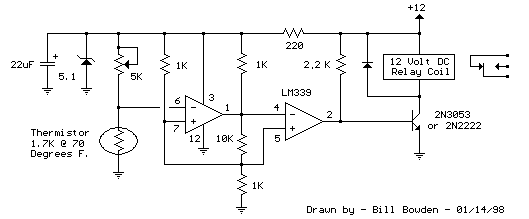
Sound-Controlled Relay

This is a relay circuit that detects the presence of sound to activate the relay. This sound-controlled relay can be utilized as a voice-operated switch or for controlling lights.
The sound-activated relay circuit typically employs a microphone or a sound sensor to detect audio signals. When sound is detected, the sensor generates a corresponding electrical signal that triggers the relay. The relay, in turn, acts as a switch to control a higher power load, such as lights or other electrical devices.
The circuit generally consists of the following key components:
1. **Microphone or Sound Sensor**: This component captures sound waves and converts them into an electrical signal. Commonly used sensors include electret microphones or sound detection modules.
2. **Amplifier Circuit**: The electrical signal from the microphone is usually weak, so an operational amplifier (op-amp) may be used to boost the signal to a usable level. This amplification ensures that even quiet sounds can be detected reliably.
3. **Comparator**: A comparator circuit can be employed to compare the amplified signal against a predefined threshold. When the sound level exceeds this threshold, the comparator outputs a signal that activates the relay.
4. **Relay**: The relay is a switch that can control a larger load. When activated by the comparator’s output, it closes the circuit, allowing current to flow to the connected device, such as a light bulb.
5. **Power Supply**: The circuit requires a suitable power source to operate the components, which may include a battery or a DC power supply.
6. **Additional Components**: Resistors, capacitors, and diodes may be included in the circuit for biasing, filtering, and protecting against voltage spikes.
The design can be further enhanced by incorporating features such as adjustable sensitivity, delay timers, or even wireless control options. This versatility makes sound-controlled relay circuits suitable for various applications, including home automation systems, security alarms, and assistive technologies for individuals with mobility challenges.This is a relay circuit that detect the presence of sound to activate the relay. You can use this sound-controlled relay as voice operated switch, light. 🔗 External reference
The sound-activated relay circuit typically employs a microphone or a sound sensor to detect audio signals. When sound is detected, the sensor generates a corresponding electrical signal that triggers the relay. The relay, in turn, acts as a switch to control a higher power load, such as lights or other electrical devices.
The circuit generally consists of the following key components:
1. **Microphone or Sound Sensor**: This component captures sound waves and converts them into an electrical signal. Commonly used sensors include electret microphones or sound detection modules.
2. **Amplifier Circuit**: The electrical signal from the microphone is usually weak, so an operational amplifier (op-amp) may be used to boost the signal to a usable level. This amplification ensures that even quiet sounds can be detected reliably.
3. **Comparator**: A comparator circuit can be employed to compare the amplified signal against a predefined threshold. When the sound level exceeds this threshold, the comparator outputs a signal that activates the relay.
4. **Relay**: The relay is a switch that can control a larger load. When activated by the comparator’s output, it closes the circuit, allowing current to flow to the connected device, such as a light bulb.
5. **Power Supply**: The circuit requires a suitable power source to operate the components, which may include a battery or a DC power supply.
6. **Additional Components**: Resistors, capacitors, and diodes may be included in the circuit for biasing, filtering, and protecting against voltage spikes.
The design can be further enhanced by incorporating features such as adjustable sensitivity, delay timers, or even wireless control options. This versatility makes sound-controlled relay circuits suitable for various applications, including home automation systems, security alarms, and assistive technologies for individuals with mobility challenges.This is a relay circuit that detect the presence of sound to activate the relay. You can use this sound-controlled relay as voice operated switch, light. 🔗 External reference





